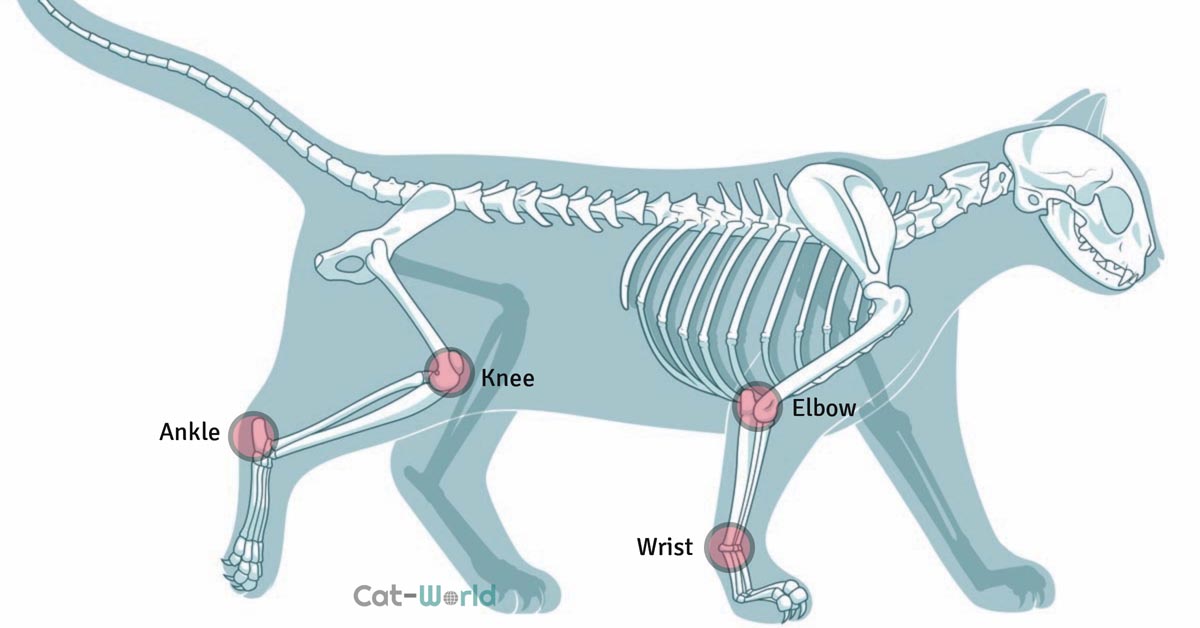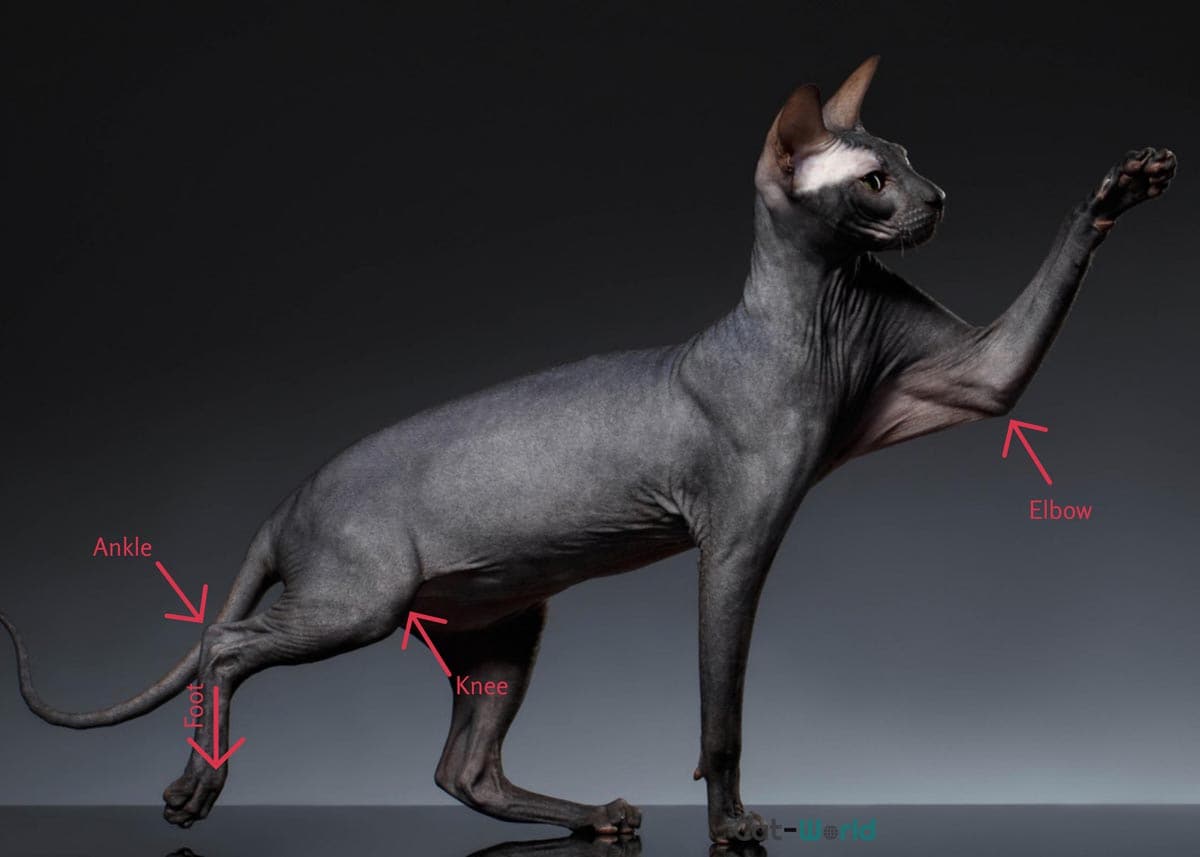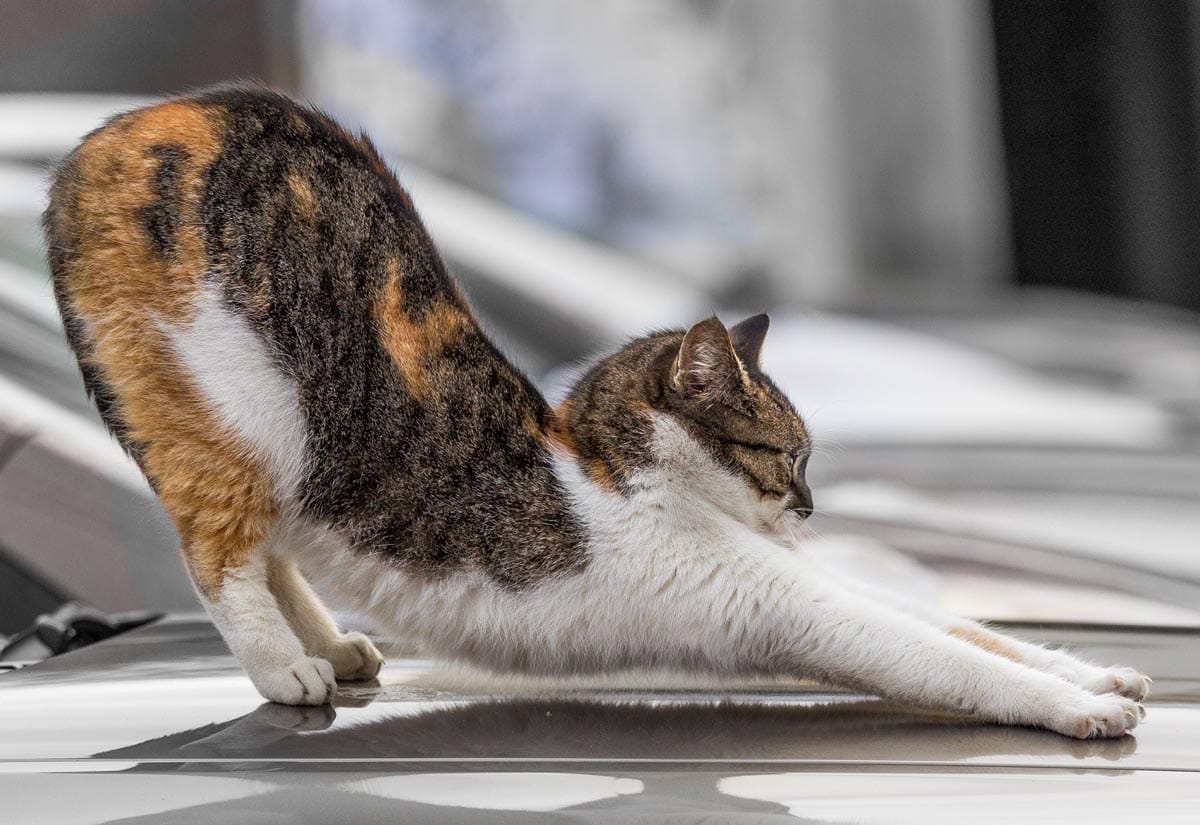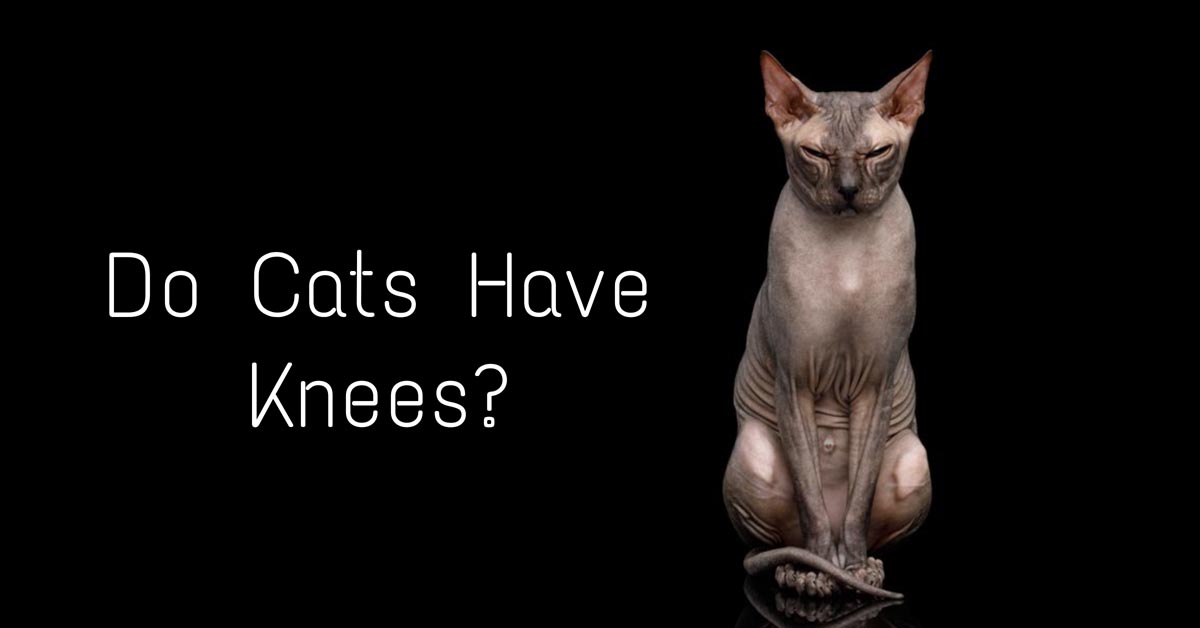Do cats have knees?
Cat’s limbs move in strange ways. Sometimes, it seems as if they don’t have bones. However, your cat has knees and elbows, though they are arranged differently than humans are. Cats have knees and ankles on their hind legs. The knee is known as the stifle joint in quadruped animals. Stifle joints connect three bones: the femur, patella, and tibia.
What about knee caps?
Cats are quadrupeds, which walk on four limbs. On the hind, or rear, legs are the patella. The patella (kneecap) is a small bone at the front of the knee joint which protects the knee and connects the muscles in the thigh’s front to the tibia. The kneecap is an oval-shaped bone set in the trochlear groove.
However, some felines may experience an issue with the kneecaps called a patella luxation. This occurs when the kneecap moves away from the trochlear groove. The luxations are based on a grading system, with severity increasing as the grades do.
- Grade I: The patella can be pushed out of the trochlear groove with manual pressure but will immediately return after.
- Grade II: The patella can move in and out of the groove on its only. However, it only moves back when the leg is extended and rotated.
- Grade III: The patella is out of the groove most of the time, but can be pushed back with manual pressure.
- Grade IV: The patella is always out of the groove and cannot be replaced with pressure.
Symptoms include:
- Limpiong
- Difficulty Jumping
- Skipping on a back leg
- Yowling or crying
Within the kneecap is cartilage, which is a cushion to keep bones from rubbing against each other. Patellar luxations wear away the cartilage, which can cause inflammation or arthritis. If you suspect a patellar luxation, contact your veterinarian.
Related: Do cats have a chin?
Do cats have arms?
As quadrupeds, all four limbs are classified as legs. The forelegs have elbows and wrists, as well as biceps and tricep muscles, which are clearly visible in the image below.

Instead of knees, the front legs have elbows. The image below shows the location of the knee and elbow joints, which are circled in red.

Sphynx cats provide great identification of the joints and muscles of the limbs because of their lack of hair. The image below shows the location of the joints. Cats are digitigrade, which means they walk on their toes. The image below shows the cat’s hind foot is large, extending from the ankle joint to the toes.

Disorders of the stifle joint
Stifle joint injuries are less common in cats than they are in dogs, and most are because of trauma such as vehicular trauma or a fall from a height. The most common stifle injuries include:
- Cruciate ligament rupture: This is a sprain where the ligament has been split into two pieces. This can cause losing full range of motion if not treated.
- Joint dislocation: This is when the joint comes out of the socket. This can cause arthritis or other loss of motion.
- Fracture of the patella: This is a slight crack in the kneecap, which can cause needing surgery if severe enough.
- Arthritis: This is a stiffing of the joints, which can make it hard or impossible to move, depending on pain levels.
Do cat knees and elbows differ from human ones?
Cats have two types of joints: hinge joints and condylar joints. Hinge joints function like human elbows or knees, where there is a certain range of motion. It’s hard or nearly impossible to make your elbow end backwards. Condylar joints are more round, which allows more a larger range of movement. Felines have a condylar joint on each back limb, just like humans. However, cats’ knees are closer to their hips. The same thing is true of elbows that there is for knees. A cat’s knee is much higher to the hip than a human’s is. Additionally, the muscles around the joints make them look different from ours.
How to keep your cat’s knees healthy?
Cats jump from high surfaces, which can cause fear in their humans regarding the health of their joints. We’ve all heard that cats land on their feet, but it’s not always true. Cats can stumble, fall, or even hurt themselves if they land the wrong way.
Your cat’s joints contribute to their mobility. If you want your cat in tip-top shape forever, we must keep up with their joint health.
Obesity can worsen normal joint aging due to increased pressure on the joints from the weight. Other conditions can affect your cat’s knees, leading to decreasing mobility. However, there’s plenty you can do to support your cat’s knees.
You should keep your cat at its ideal weight from kittenhood, to decrease the chance of obesity. The cat should be active and regularly engage in exercise. If your cat doesn’t seem to enjoy playing, try to figure out what their preferred play style is. Finally, the best medicine is prevention. By getting routine care, your vet can help head off any potential joint problems.
Are knee problems in cats congenital?
No, not all knee problems in cats are congenital. Congenital means it’s a condition your cat is born with, not caused by an outside force or illness. The most common congenital issues are development abnormalities while in the womb. Issues such as patellar luxation or ACL injuries usually result later in life.
Frequently Asked Questions
Why are cats so bendy?

Cats are bendy thanks to their flexible spine, which can rotate more than other animals (including humans). Also, the cat’s shoulder blades are not attached to the clavicle, which gives them even more flexibility.
Cats have a floating clavicle
The cat’s clavicle (collarbone) attaches to the sternum and shoulder blades in humans; however, in cats, this tiny bone is located deep within the chest muscle. This makes the cat’s chest much narrower and deeper than other mammals, increasing the length of his stride and allowing the cat to squeeze into narrow places.
Why do cats have whiskers on their front legs?
The whiskers behind the wrist on the foreleg are called carpal whiskers; their purpose is to assist with climbing and contact with prey.
Are cats knees backwards?
It often seems like cat’s knees are backwards because we are usually looking at their ankles. Cats walk on their toes, and their knees are often hidden within the body or under fur.

